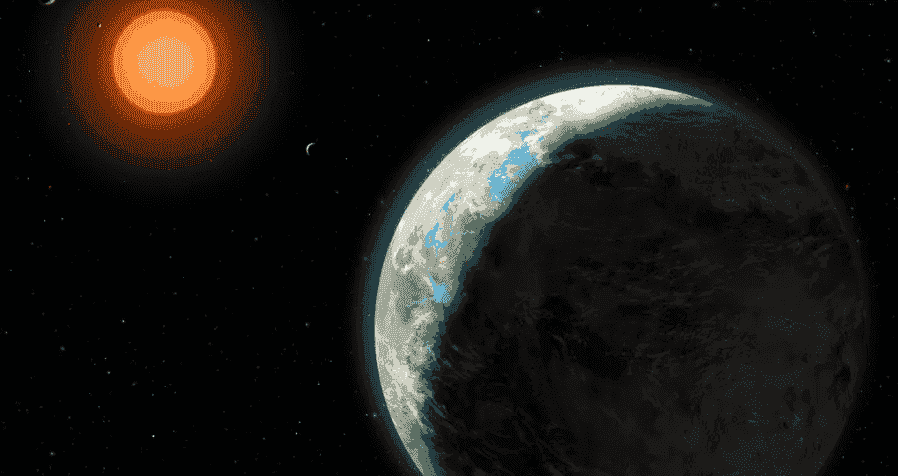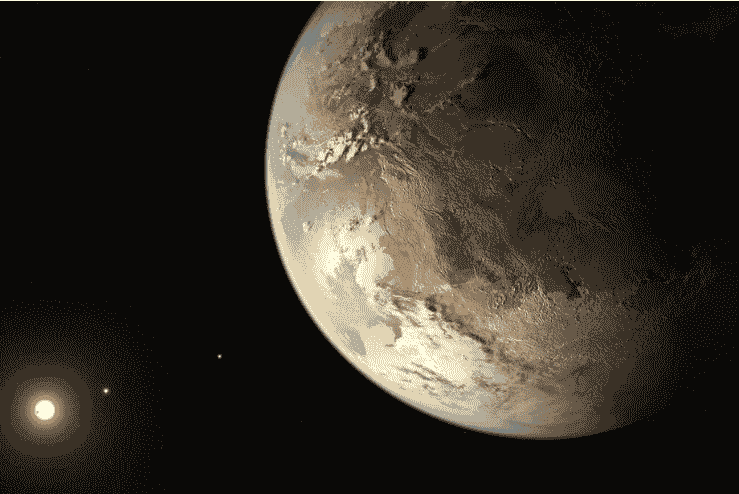
An Earth-like planet that is only 31 light years away from our own has been found by astronomers to have the potential to harbor life.
Wolf 1069 b is a planet with a mass comparable to Earth’s and an orbital distance that would permit the presence of liquid water.
Evidence Of Existing Earth-Like Planet
There is evidence that an exoplanet, or planet outside of our solar system, might have an atmosphere, a magnetic field, and a day-and-night cycle that lasts forever.
The German Max Planck Institute for Astronomy (MPIA) team has been searching for exoplanets to check for biosignatures that could indicate the presence of extraterrestrial life, either past or present.
However, it is believed that it will still be ten years before we can conduct a more thorough examination. Wolf 1069 b is currently one of roughly a dozen possibilities discovered thus far.
It is believed that the Extremely Large Telescope (ELT), which is now being constructed in Chile to replace the Very Large Telescope of the European Southern Observatory, could accomplish this (VLT).
ELT is expected to acquire its first photographs sometime in 2025, which is known as the first light. NASA announced last year that there are already more than 5,000 planets outside of our solar system that is known to science.
Additionally, there are tiny, rocky worlds in the so-called habitable zone that are the same size as Earth and orbit their host star. Only a few exoplanets fall within this category, but the recently discovered Wolf 1069 b is the sixth closest one to Earth.
Others include Trappist-1 e, a member of the most extensively researched planetary system outside of our own, and Proxima Centauri b, which is the nearest to us at only 4.2 light years away.
The most recent potentially terraforming exoplanet, TOI 700 e, was discovered by NASA’s planet-hunting spacecraft TESS only a month ago. It is located 100 light-years from Earth. The red dwarf Wolf 1069, which was the subject of initial research using the CARMENES spectrograph at the Calar Alto Observatory in Spain, is orbited by Wolf 1069 b.
They discovered a modest, regular shift in the frequency of light it emits, which suggests a planet is tugging on the star’s gravity and causing it to move slightly. The CARMENES team was able to detect the wobbling and resulting shift because Wolf 1069 and Wolf 1069 b have a mass that is roughly similar.
Exoplanet Contains Habitable Atmosphere
Lead author of the study, Dr. Diana Kossakowski, said: “When we examined the data of the star Wolf 1069, we found a definite, low-amplitude signal of what seems to be a planet of about Earth mass. At a distance equal to one-fifteenth of the distance between the Earth and the sun, it completes an orbit around the star in 15.6 days.”
Wolf 1069 b falls into the habitable orbital distance that is shifted inward by data suggesting that Wolf 1069’s surface is relatively chilly. A further factor that prevents life from existing on the planet is the fact that it only receives around 65% of the sun’s radiant energy that Earth does.
Computer simulations indicate that if the planet does, in fact, have an atmosphere, temperatures on its surface might reach up to 55°F (13°C) across a significant portion of its dayside.
Only -9.4°F (-23°C) would be livable in the absence of an atmosphere, meaning that any water would be permanently frozen and there would be no way to support life.
Read more: Ex-SpaceX Engineer Claims Elon Musk’s Company Told Him to ‘Retire or Die’
More About Wolf 1069

The host star’s or space’s high-energy electromagnetic radiation, which may destroy any biomolecules, would likewise be a threat to the planet.
The atmosphere of a planet can be stripped away by excessive radiation from a star, but thankfully Wolf 1069 is expected to release very little radiation. Astronomers believe it may contain a magnetic field produced by a liquid core in addition to an atmosphere for protection.
The Earth’s outer core, about 1,900 miles (3,000 km) below the surface, is composed of churning, superheated liquid iron that mostly produces the planet’s magnetic field.
Iron travels in convection currents as heat escapes from the inner core, and the movement produces strong electrical currents. These electric currents combine to generate a magnetic field that surrounds the globe and reaches into space as a result of Earth rotating on its axis.
This electrically charged coating on Wolf 1069 b will protect biomolecules by deflecting charged particles thrown from nearby stars known as stellar winds.
Read more: China admits ownership of second spy balloon discovered in Latin America

